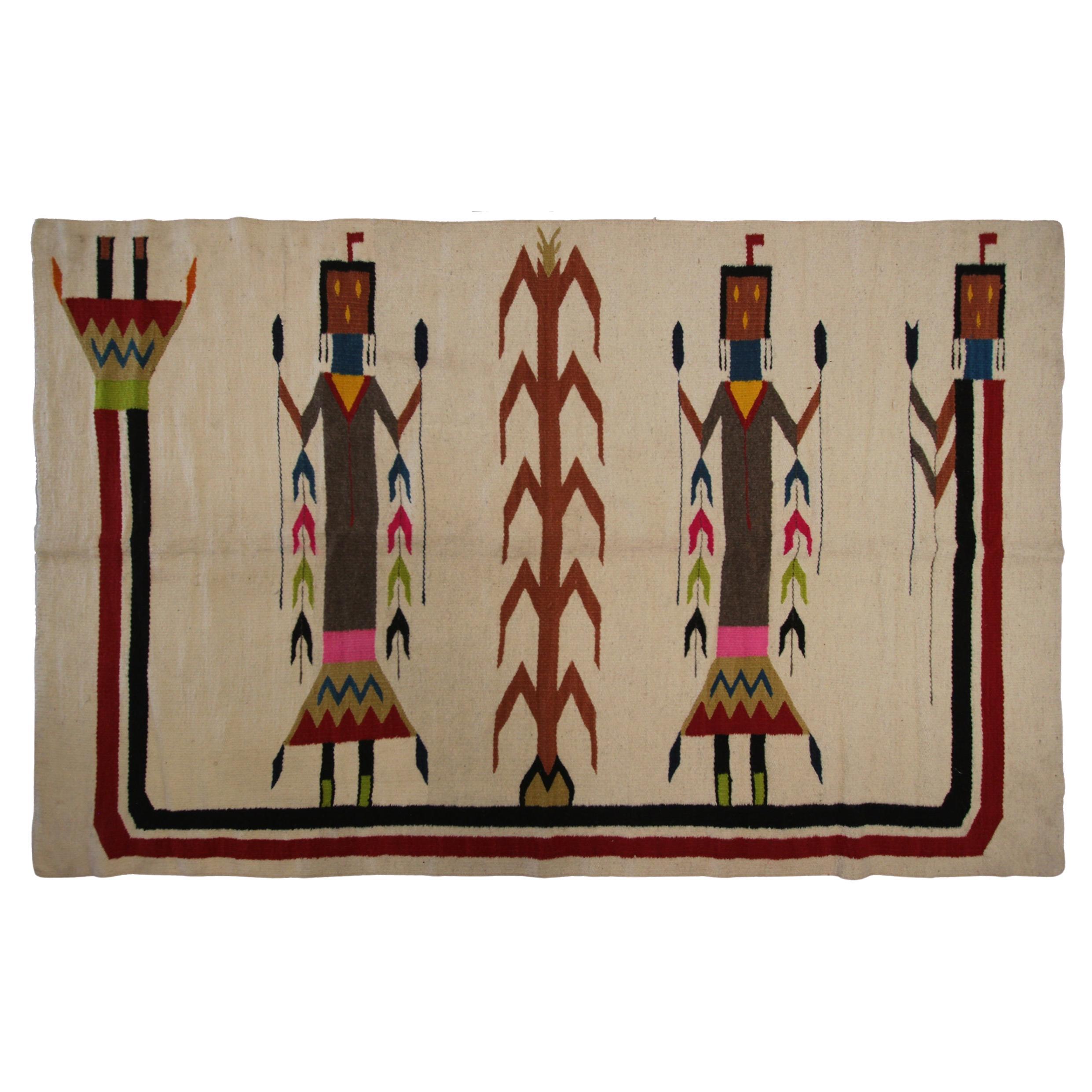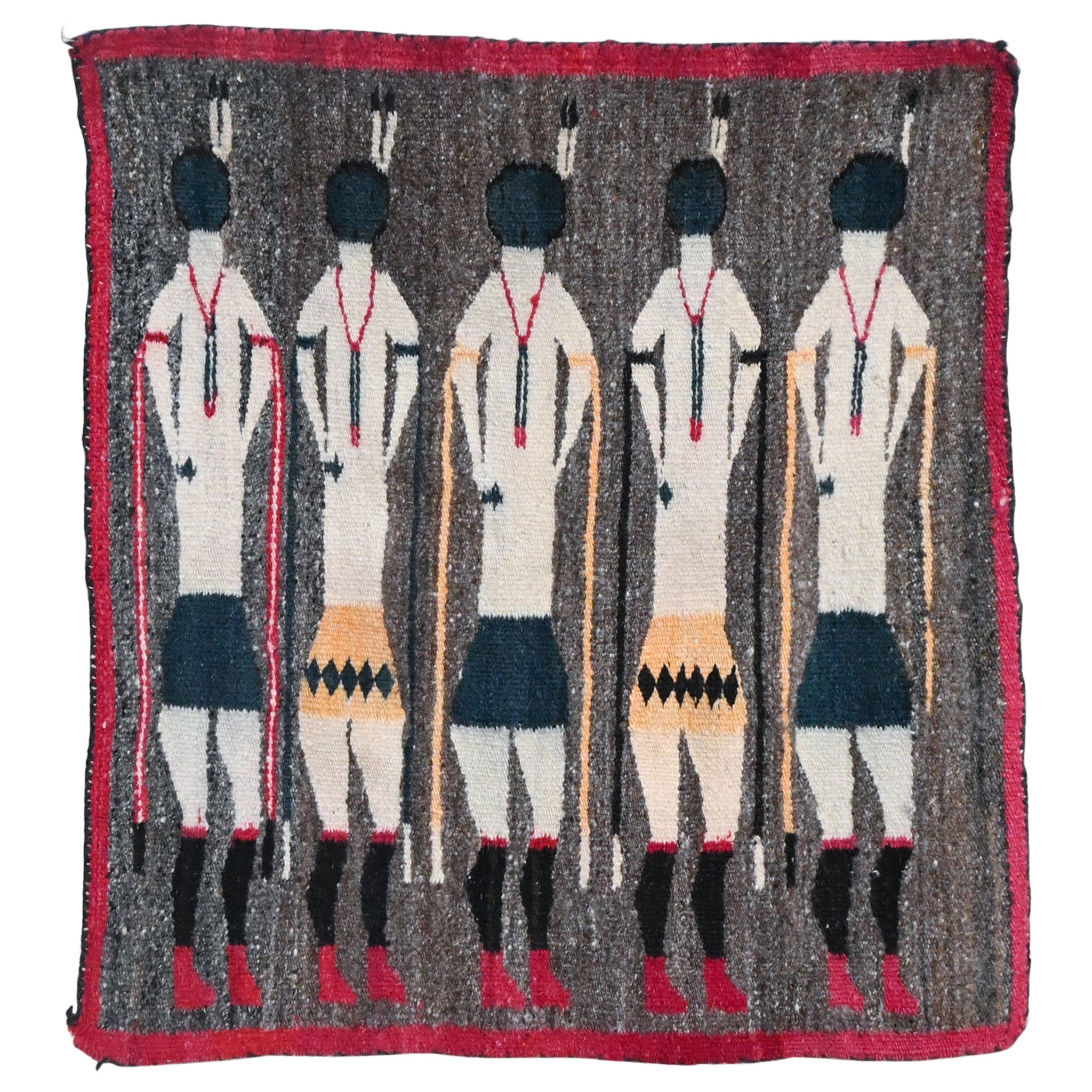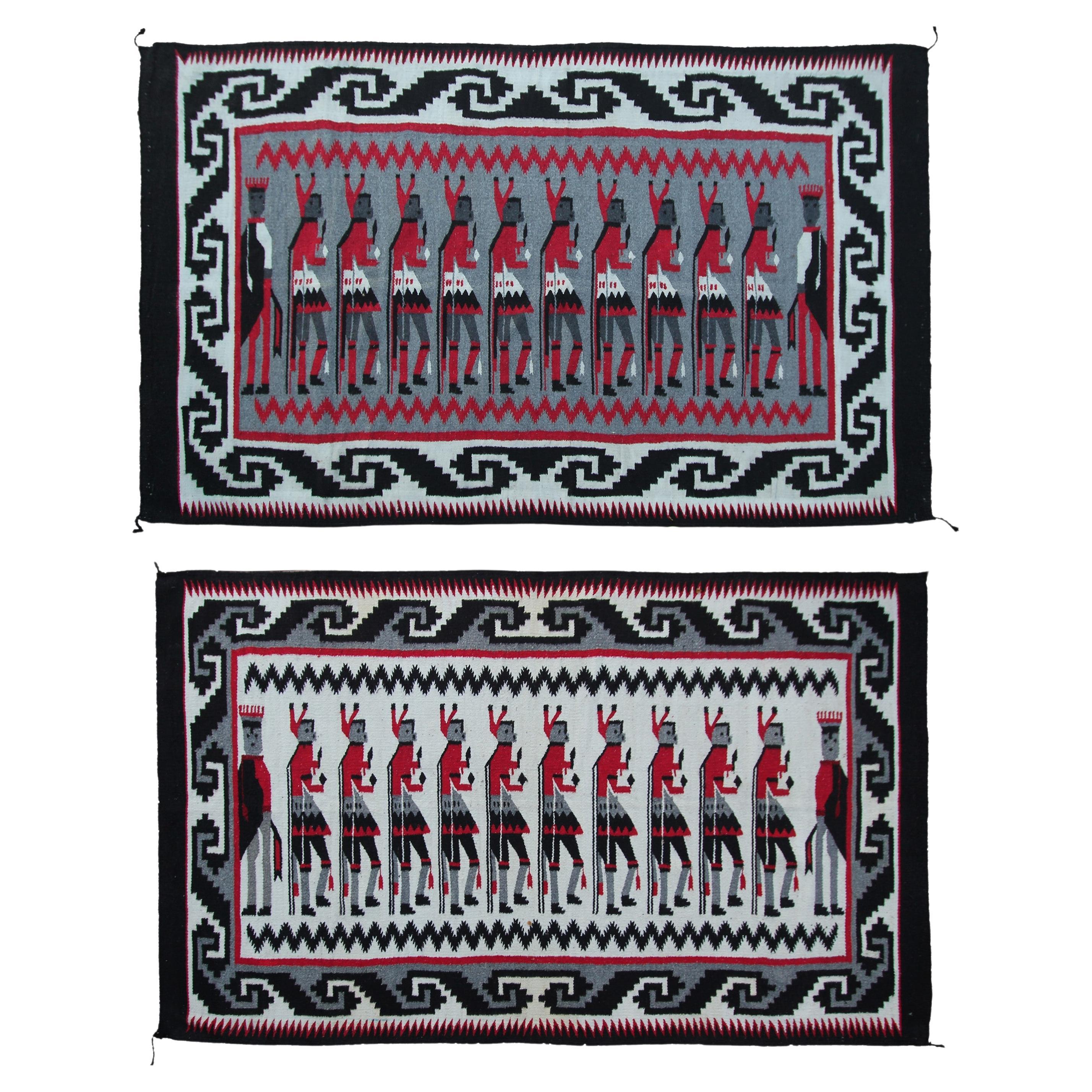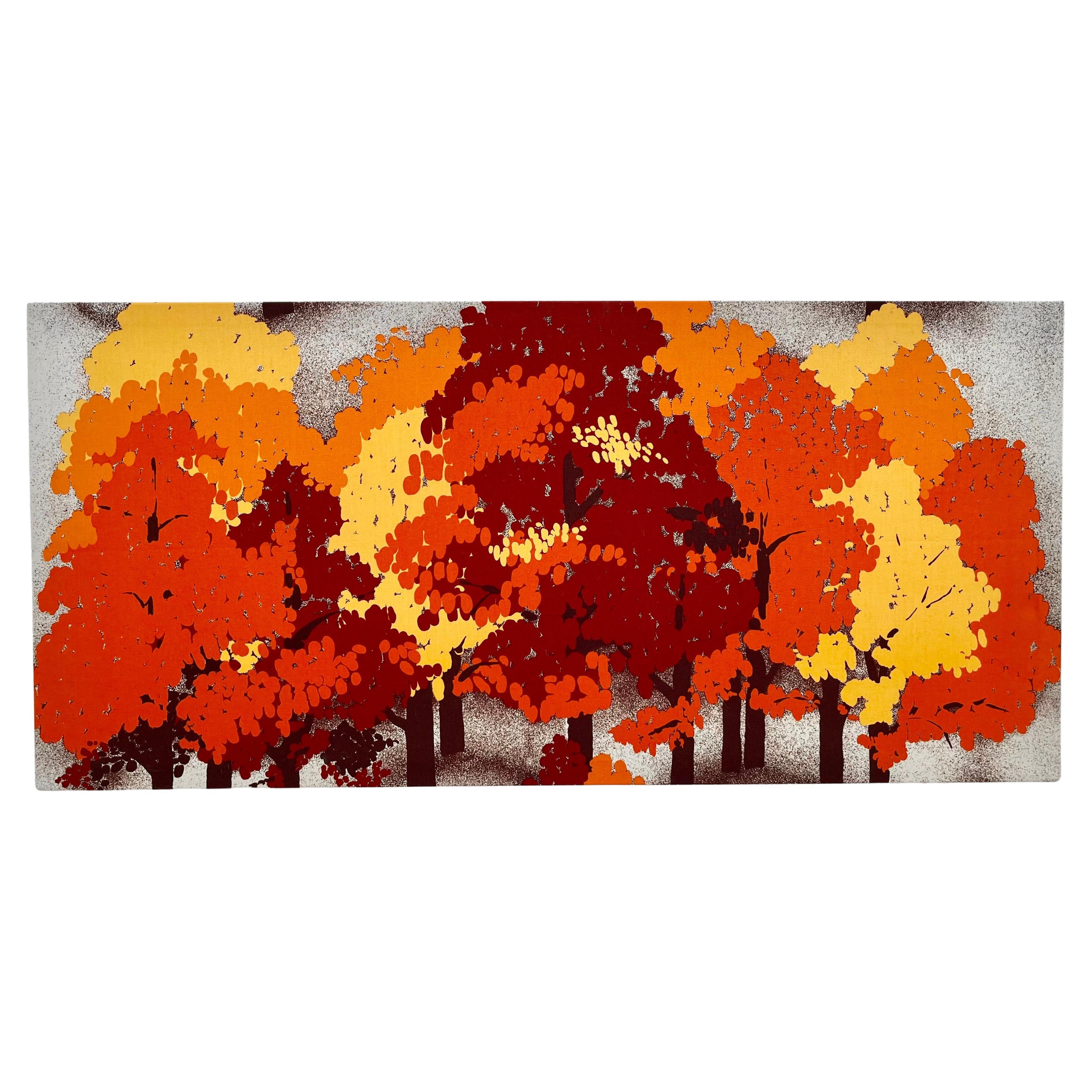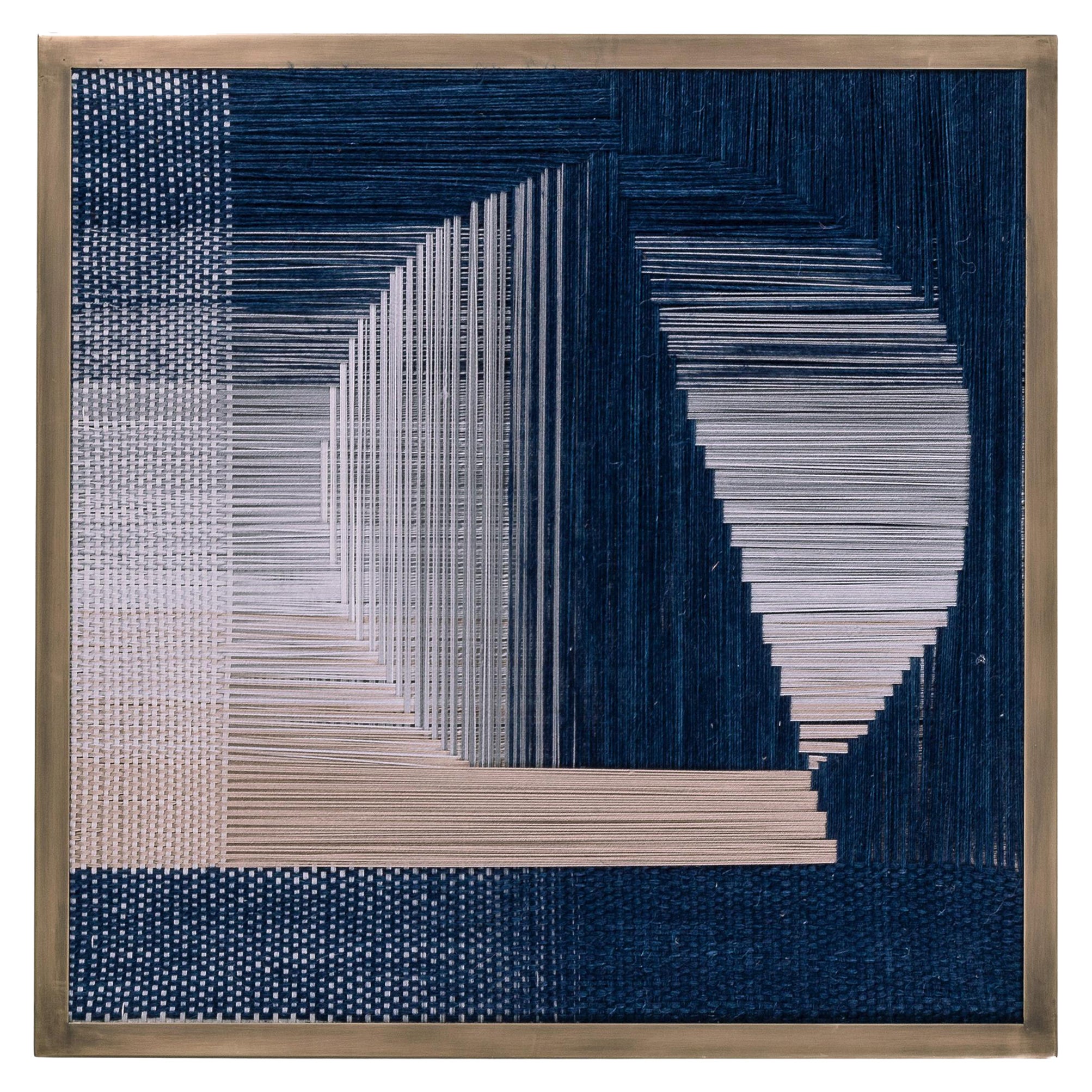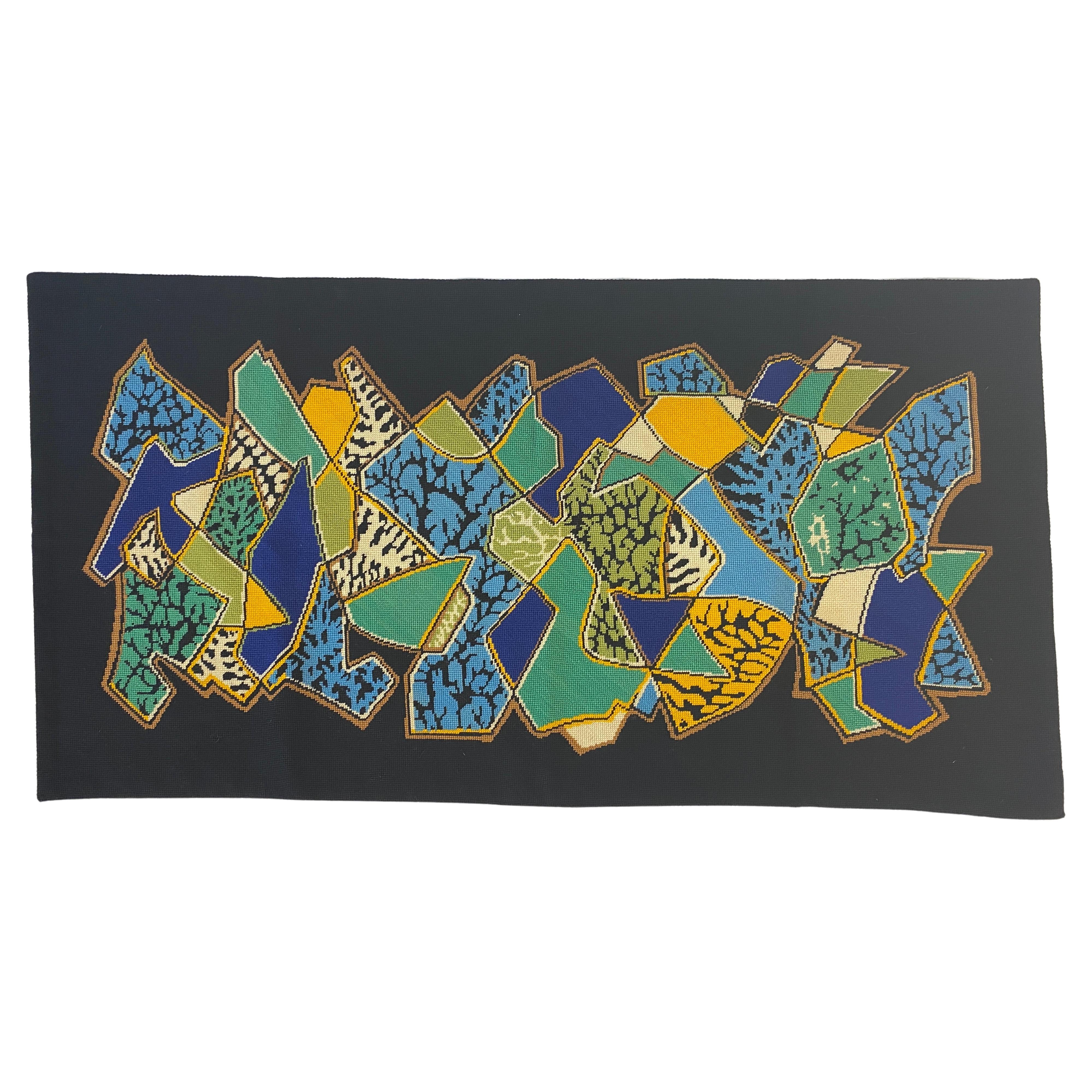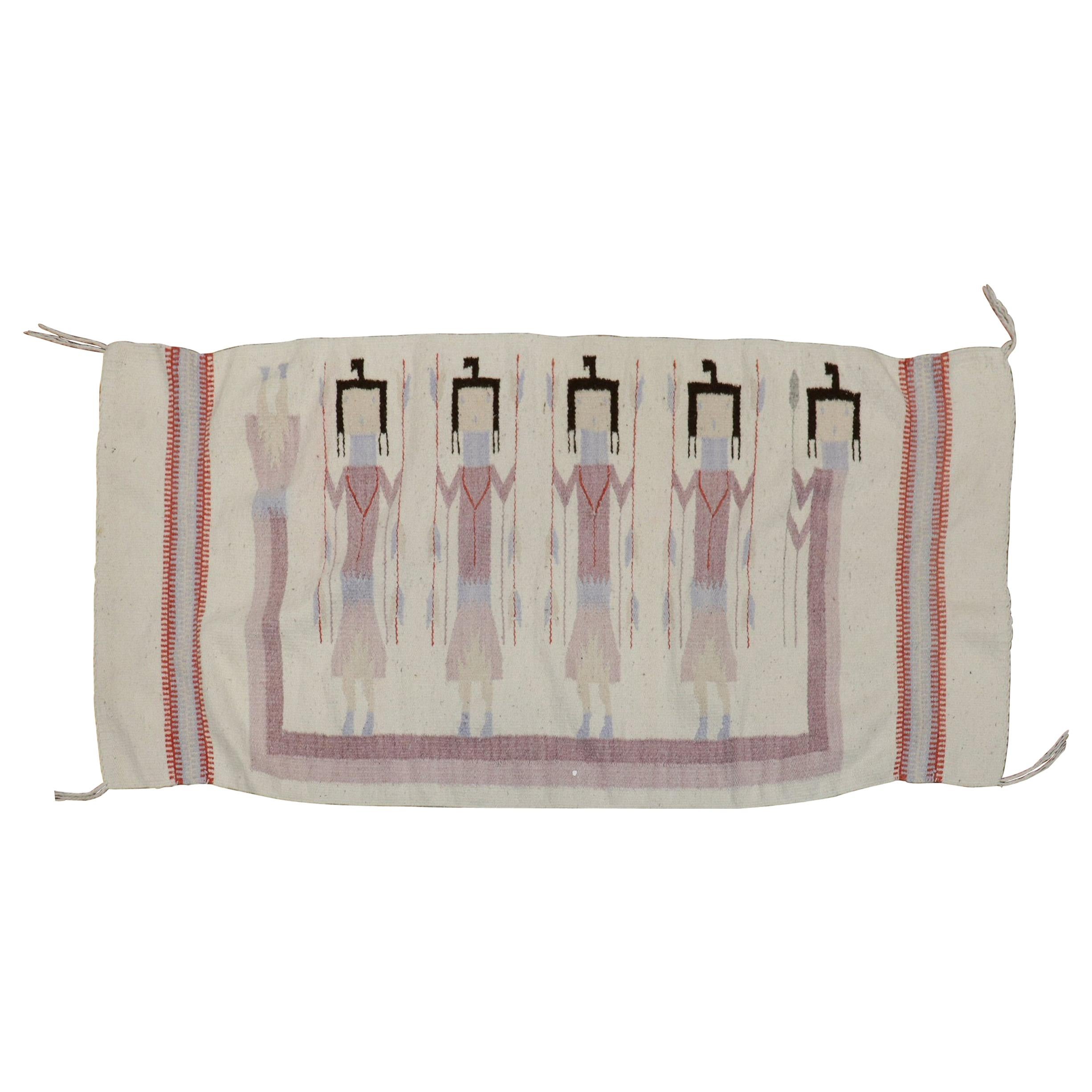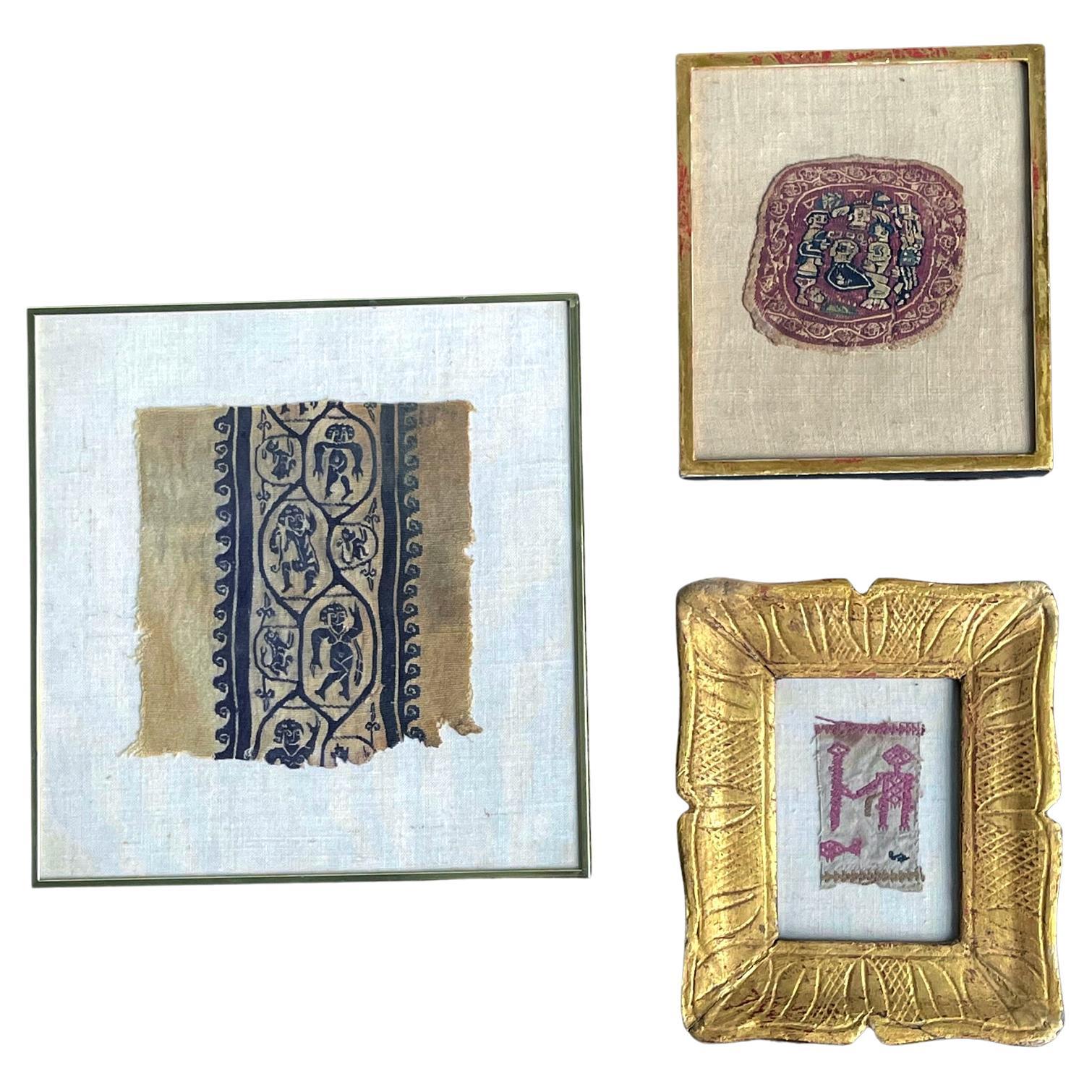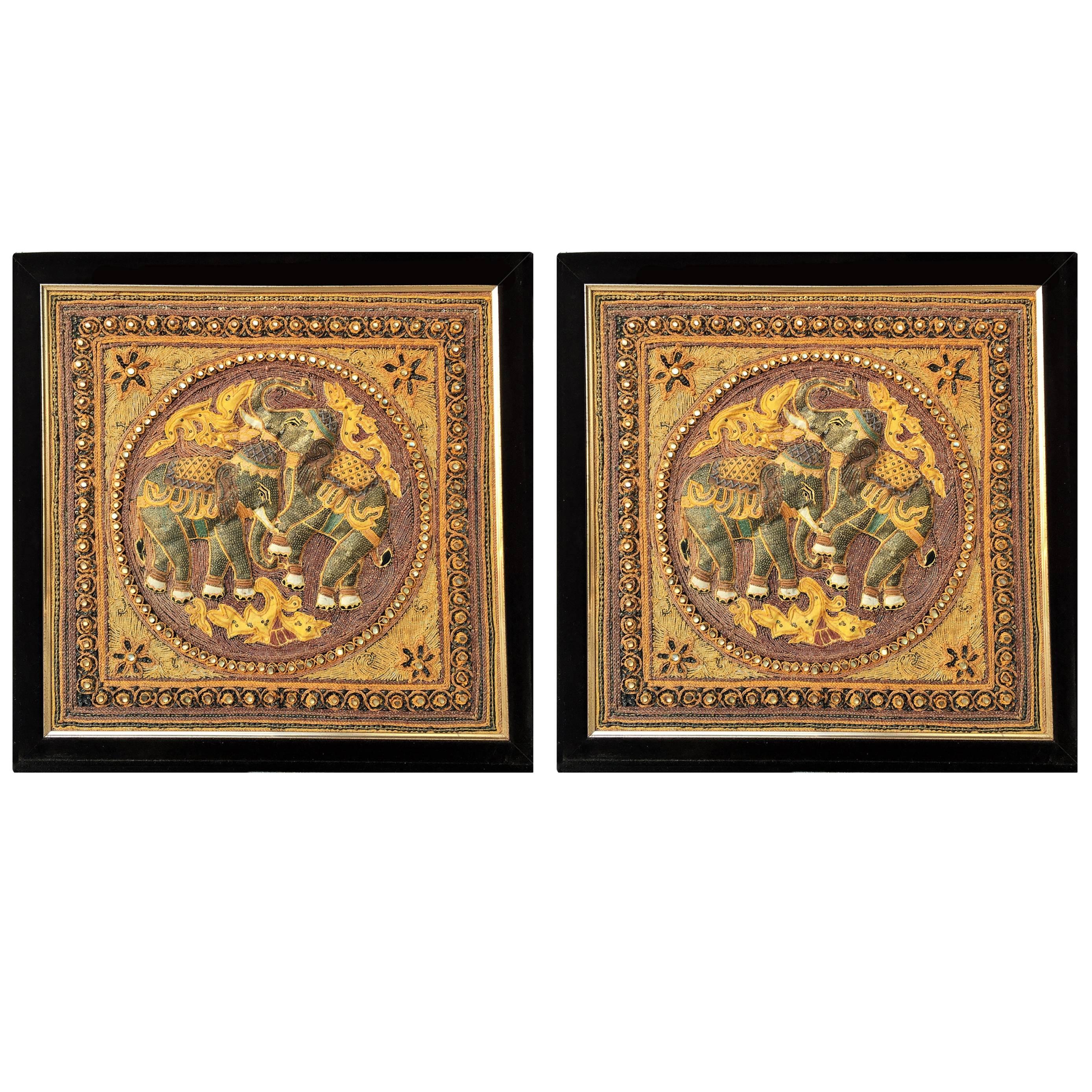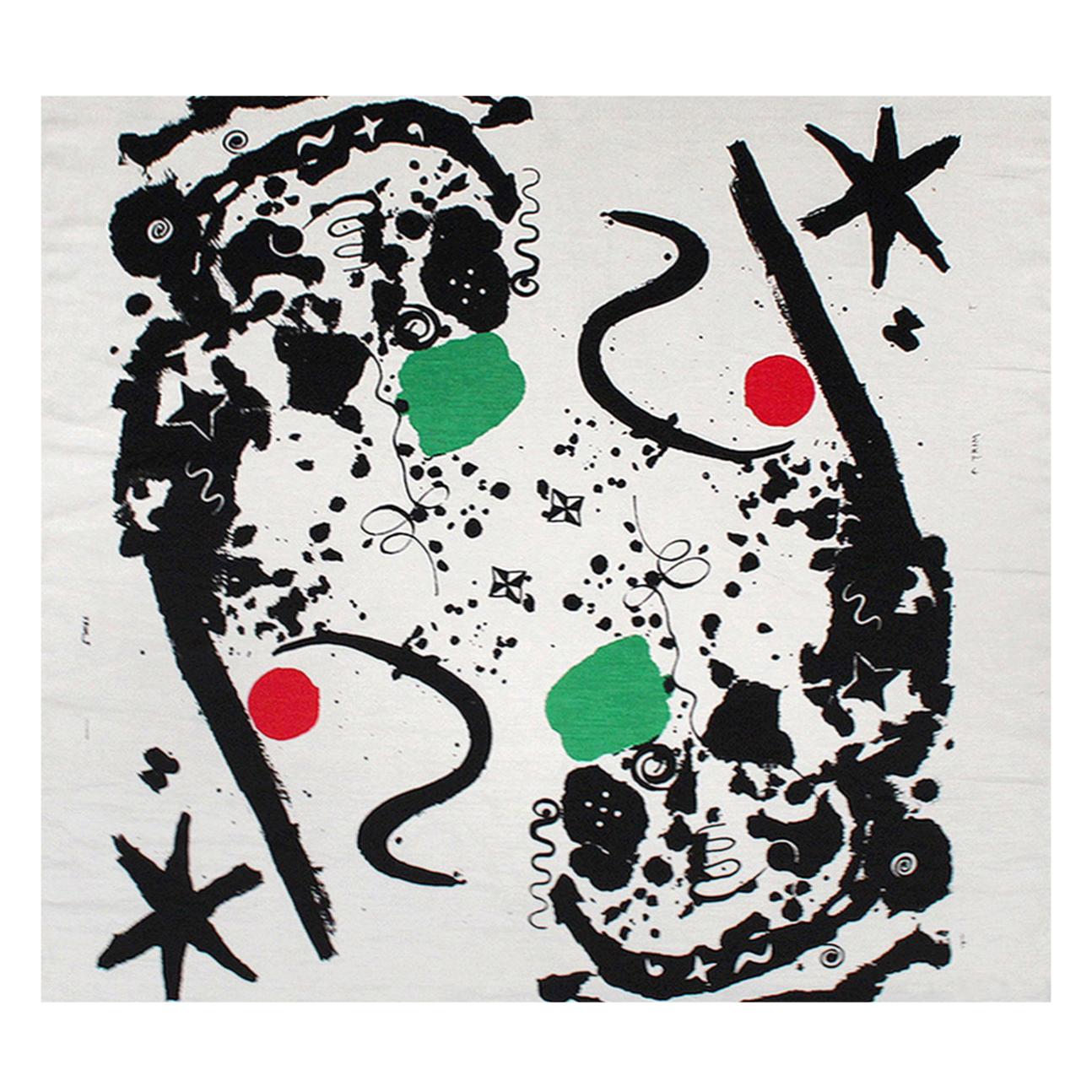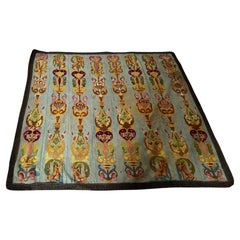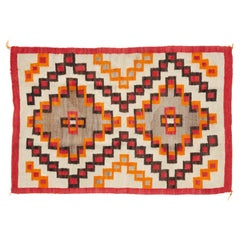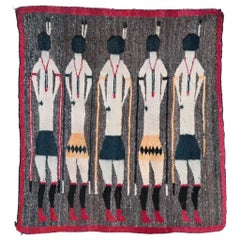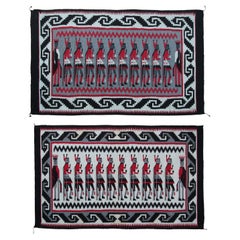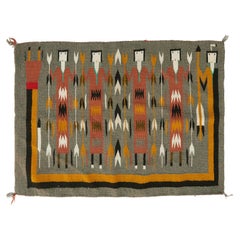
Navajo Yei Be Chei Textile Art
View Similar Items
Want more images or videos?
Request additional images or videos from the seller
1 of 10
Navajo Yei Be Chei Textile Art
About the Item
- Creator:Navajo Indian Art (Maker)
- Dimensions:Height: 26 in (66.04 cm)Width: 36 in (91.44 cm)Depth: 0.2 in (5.08 mm)
- Style:Navajo (Of the Period)
- Materials and Techniques:
- Place of Origin:
- Period:
- Date of Manufacture:1950s
- Condition:Wear consistent with age and use.
- Seller Location:Morristown, NJ
- Reference Number:1stDibs: LU5990228108302
About the Seller
4.9
Platinum Seller
These expertly vetted sellers are 1stDibs' most experienced sellers and are rated highest by our customers.
Established in 2020
1stDibs seller since 2021
120 sales on 1stDibs
More From This SellerView All
- Antique Aubusson-Style Pictorial Tapestry - Urn, Tendril and Crowned Lion MotifsLocated in Morristown, NJAn unusual aubusson-style tapestry wall hanging comprising 8 panels with recurring lion, urn and floral motifs on a pale blue field with a passementeire border and cotton backing. Wh...Category
Antique Late 19th Century French Aubusson Tapestries
MaterialsCotton, Fabric, Wool
- Fourth Phase Navajo Rug/Wall HangingLocated in Morristown, NJA striking Navajo Fourth Phase rug/wall hanging. Heavy, densely woven wool in a red, black and orange geometric pattern on a cream and brown/grey ground, with orange edging. Lazy lin...Category
Early 20th Century American Native American Decorative Art
MaterialsWool
- Antique Tabriz-Style Rug in Natural TonesLocated in Morristown, NJ19th/20th c. Tabriz-style rug, finely woven, low pile wool-silk blend in nature inspired tones, central lozenge-shaped medallion, dark blue border. The color palette is a very attra...Category
Antique Late 19th Century Unknown Tabriz Persian Rugs
MaterialsWool, Cotton, Silk
- Vintage Moroccan Blue Kilim Rug with Geometric Border and Two Diamond LozengesLocated in Morristown, NJAntique early 20th century Moroccan Kilim rug, with two central diamond medallions, made in simple flat-woven or tapestry technique, in which the pattern is produced by horizontal wefts that cover the vertical warps. The ground is a denim blue color with browns, greens, beiges, pinks and blues woven into the border decoration and diamond medallions. The desire for the ‘exotic’ rug family in Western culture played no small part in the entrance of Moroccan style to the world stage and the gradual western influence on the style we see today. Given their thinner, supple structure, Kilim rugs are usable not only as decorative floor covering, but also as wall hangings and on furniture or bed coverlets...Category
Vintage 1950s Moroccan Tribal Moroccan and North African Rugs
MaterialsWool
- Maxwell Mays Folk Art Oil on Canvas, Cascade Springs Colorado, 1983By Maxwell MaysLocated in Morristown, NJMaxwell Mays (1918-2009) Painter and Illustrator. Signed and dated 1983, this large scale framed oil on canvas is a charming and detailed depiction of life in Cascade Springs, Colorado on a snowy day. Maxwell Mays was born in Rhode Island in 1918, and focused his art on celebrating the landscapes of his home state. Known for their birds-eye perspectives and nostalgic style, Mays' prints have appeared multiple times on the cover of Yankee Magazine. His paintings hang in many establishments, including the University of Rhode Island, and are particular favorites of Rhode Island residents. Mays' artwork often depicts scenes from throughout Rhode Island and the surrounding areas of New England but he did produce works depicting communities from across America . Featuring town squares, farm lands, and harbors, Maxwell Mays' prints celebrate the Americana found in small towns. A graduate of RISD, he began painting seriously while serving in the US Air Force in Brazil during WWII. His first one-man commercial show was at the Ferargil Gallery in New York in 1948. In the ensuing years he became notable for a number of highly successful art shows and magazine covers, and was a highly sought-after speaker and storyteller. As a successful businessman, he was Treasurer of Mays Manufacturing Company, a family business until its sale in the mid-1980s. He was Past President and Director Emeritus of the Providence Art...Category
Vintage 1980s American Folk Art Paintings
MaterialsCanvas, Wood, Paint
- 1950s Art Deco Style Figurative Painting with Horses by Porter Woodruff, FramedBy Porter WoodruffLocated in Morristown, NJAmerican intra-war artist and illustrator Porter Woodruff (1894-1959). Arabian Horse scene, oil and gold leaf on board with chalky gouache. Signed Woodruff on lower right of painting. Signature somewhat obscured by frame. His Art Deco-influenced paintings are highly decorative and appealing, the compositions complex and well-thought out. The gold leaf background is decorative and elegant. His are rare Modernist paintings by an artist who found himself at the very heart of design, fashion and celebrity life in the early part of the century. Label at back for Pitt & Scott Ltd London - well known for its expertise in handling antiques, works of art and fragile artefacts. Dimensions: 11.5"h x 15.5"w (sight) 12.5"h x 17.5"w (frame) Porter Woodruff, was an illustrator artist and contributor to Vogue Magazine and Home & Garden (including covers for both). He was one of five artists stationed in Paris in 1923 for Vogue. Woodruff spent considerable time in Tunisia, North Africa, residing with his romantic partner, Romanian socialite George Sebastian. Sebastian owned a lavish, coastal property in then-trendy Hammamet, near Tunis on the Mediterranean. Sebastian fell in love with the simple beauty of the quiet fishing port of Hammamet and was the first of the international set of the times to build his villa there. He started a trend that has never ceased. Frank Lloyd Wright is said to have claimed Dar Sebastian to be ”the most beautiful house I have ever seen”. American and European intelligentsia and upper-crust were attracted to the area between the wars. The artists Cocteau, Elsa Schiaparelli, Paul Klee, Andre Gide, the Sitwells, and Cecil Beaton enjoyed visiting, partying, and undertaking what someone once described as indulging the opportunity to do 'some rather elaborate sinning'. Other visitors included Art Deco designer Jean-Michel Frank, Wallis Simpson, Somerset Maugham, and Greta Garbo, among others. The onset of war disrupted this scene and it never truly regained its former glory. Dar Sebastian was requisitioned by the 'Desert Fox', German General, Field Marshal Erwin Rommel...Category
Vintage 1950s Tunisian Art Deco Paintings
MaterialsWood, Paint
You May Also Like
- Antique Navajo Rug Yei Navajo Rare Human Geometric Handmade Wool Ivory, 1940Located in New York, NYNavajo rug flat woven rug tapestry beige Measures: 4' x6' (3'11" x 5'7") 119cm x 170cm Circa 1920 "The woolen rug has a white background color on which are three stylized figures on each side of a center cornstalk. All are surrounded on three sides by a "guardian "figure - one side is the head and the body - the other side are the legs. The rug is a Navajo Yei rug. All the figures are holding prayer sticks; there are feathers attached to the elbows of the figures in a vertical line. The colors of the rug are white, red, maroon, blue, tan, brown, grey, orange, rust and gold. The most common type of Navajo Yei rug are those with a white background color. Navajo Yei rugs were made at Lukachukai or in the Shiprock area or even Ganado. It is a fact that a Navajo Yei rug with many Yei figures and many colors will garner the highest value. While Yei rugs are technically woven for the floor, they were often placed on couches, or hung on the wall like paintings, few actually touched the ground. The Yei figure is a frequently used pattern in Navajo rugs. Male Yei figures are generally pictured with round heads, and female Yei figures with square heads. Modern Yei rugs are more often pictorial compositions, showing a row of front-facing stylized stick figures with a Rainbow Guardian which protects the figures on three sides, indicating the sand painting roots of this particular style. The Yei rug portrays ceremonies on a desire for healing, not only physical health, but also mental, spiritual, and even material well-being. The "Holy People...Category
Vintage 1940s Persian Navajo North and South American Rugs
MaterialsWool
$5,485 Sale Price20% Off - Yei Navajo Figural Double-Sided Flat Weave Wall Hanging, 1930 Round HeadsLocated in Basingstoke, HampshireA Yei Navajo Figural double-sided flat woven wall hanging - circa 1930. Displaying five standing figures on an deep speckled grey ground, framed by a red border. The Yei iconography is related to Navajo religious sandpaintings. Navajo religion has a reverence for nature and is based on maintaining a balance in the universe. It was believed that there was a sense of harmony needed to maintain a healthy life. Should an individual do something to upset this balance, then it was believed that an illness might befall them. Much like in the modern-day, a medicine man was hired to help regain this harmony. The remedy involved a combination of chanting, herbal medicines and a sandpainting ritual. Various coloured sands were sprinkled on the ground until they formed a specific Yei (holy person), based on the god he was trying to summon. When the sandpainting was completed, it was sanctified by spreading corn pollen over it. Once the sacred sandpainting had served its purpose, it was erased. To save it or reproduce its imagery was dangerous and could bring serious grief to anyone who retained the image. During the 1890s, the Navajos phased out blanket weaving in favour of rugs. There was strong demand from the vast migration of settlers, building homes by the thousands, who needed something to cover their floors. The first Navajo rug depicting holy people...Category
Early 20th Century American Tapestries
MaterialsFabric
- Vintage Yei Navajo Non Identical Pair Rug Human Hand woven Wool TapestryLocated in New York, NYVintage Pair Yei Navajo Tapestries Tapestry Flat Woven Rug 8x6 8x5 234cm 176cm 226cm x 143cm "This is a pair of magnificent vintage Yei Navajo tapestries. This pair can be...Category
Vintage 1940s North American Navajo North and South American Rugs
MaterialsWool
$3,431 Sale Price / set20% Off - 1970s Large Textile Wall ArtLocated in Miami, FLLarge vintage Textile wall Art. Circa 1970s Features a stretched canvas with a forest inspired design printed in vibrant earth tone colors. ...Category
Vintage 1970s American Mid-Century Modern Decorative Art
MaterialsTextile, Wood
- Wall Hanging Black Macrame Wall Art, Fiber Art, Textile Art, Wall TapestryBy Milla NovoLocated in Bennebroek, NLBlack cotton Macrame wallhanging This is a unique one of piece. Macrame art, wall art, wall decor, contemporary art, wall tapestry Handmade by Milla Novo Size 180 cm x 280 cm ...Category
2010s Dutch Tapestries
MaterialsCotton
- Textile Wall Hanging Handwoven Framed Wall Art BlueBy Begüm Cana ÖzgürLocated in Istanbul, TRNamed after the Mesopotamian Goddess of the Moon, SIN, is a handwoven textile wall piece. The piece comes with a metal frame with brass coating. Custom wood frame is available upon ...Category
2010s Turkish Modern Decorative Art
MaterialsMetal
Recently Viewed
View AllMore Ways To Browse
Navajo Indian Turquoise
Navajo Indian Art On Sale
Corn Stalk
Navajo White Turquoise
American Indian Yei
Mexican Wall Tiles
Tiles Purple Blue
Venice Souvenir
Medieval Plaque
Vintage Delft Tile
Copper Enamel Plaque
Vintage Delft Tiles
Pair Intaglio
Antique Romain
Art Nouveau Wall Hanging
Framed Delft Tiles
Framed Herbariums
Rolling Hanging
